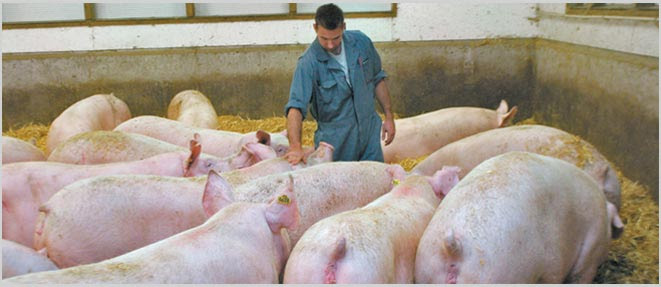Optimal Feed and Feeding Management in Livestock Farming
Successful livestock farming hinges on meticulous attention to feed and feeding management. Animals in a controlled and domestic setting thrive based on the nourishment provided to them, and their life, growth, and overall well-being are intricately tied to the skill and diligence of the farmer. In this comprehensive exploration, we’ll focus on the pivotal role that feeding plays in the success of livestock farming, using the pig as a prime example.
The significance of Feeding in Pig Farming
In the realm of pig farming, the lion’s share, approximately 100%, of a pig’s well-being and growth is contingent upon feeding. The composition of their diets is critical, and when administered with expertise and precision, pigs flourish under the knowledgeable guidance of a farmer or farm manager. Pigs are relatively robust creatures, typically free from major health hazards and disorders, unless, of course, the farmer fails in their duty to care for the animals and provide timely medical attention.
A Glimpse into a Thriving Pig Farm
Recently, I had the privilege of visiting numerous pig farms, with the most recent one just two weeks ago. This particular farm was a marvel, boasting over 300 pigs. The operation was well-organized, with an abundance of feed, resulting in substantial profits. The sheer number of pig pens was a testament to the unwavering commitment and dedication of the farmer responsible for this thriving enterprise.
Gestation and its Feeding Requirements
During the gestation period of female pigs, it is crucial to provide high-quality feed, fresh water, and a wallow. These amenities are non-negotiable and contribute significantly to the successful gestation of the mother pig and the birth of healthy piglets. Sows that are expecting require special care and attention, and feeding plays a central role in this process.
Adapting Feeding Regimens for Pregnant Sows
Pigs are known for their affinity for fats, producing and retaining them in their bodies. Prior to mating or during the heat period leading up to mating, normal feeds such as rice bran, corn bran, wheat bran, maize husk, chaffs, offals, blood meals, and similar options can be provided based on preference. However, following successful mating and signs of pregnancy, the feeding regimen must be adjusted. Abrupt changes in diet can be detrimental to the pig’s digestive system. The aim is to reduce fat intake and increase fiber in the diet since excessive fat accumulation can complicate the birthing process.
Feeding Pregnant Sows
Pregnant sows have different nutritional requirements. They do not need a diet rich in fiber, but rather a maintenance ration to keep them healthy and alive. While occasional administration of nutrient-rich feeds like blood meal and protein is beneficial, it should not be excessive. During this phase, fiber is the primary dietary requirement, as it helps prevent the development of oversized piglets that can impede the birthing process. Once the pig has given birth, it is advisable to revert to the standard production ration to support the mother pig in producing an ample supply of high-quality milk for the piglets.
Nurturing Piglets
In conclusion, successful pig farming involves a comprehensive understanding of feeding practices before, during, and after pregnancy. The well-being of these animals hinges on the farmer’s knowledge and dedication to providing the right nourishment at the right times. By adhering to these guidelines, we can ensure the health and prosperity of our pigs, ultimately leading to a successful and rewarding livestock farming venture.
